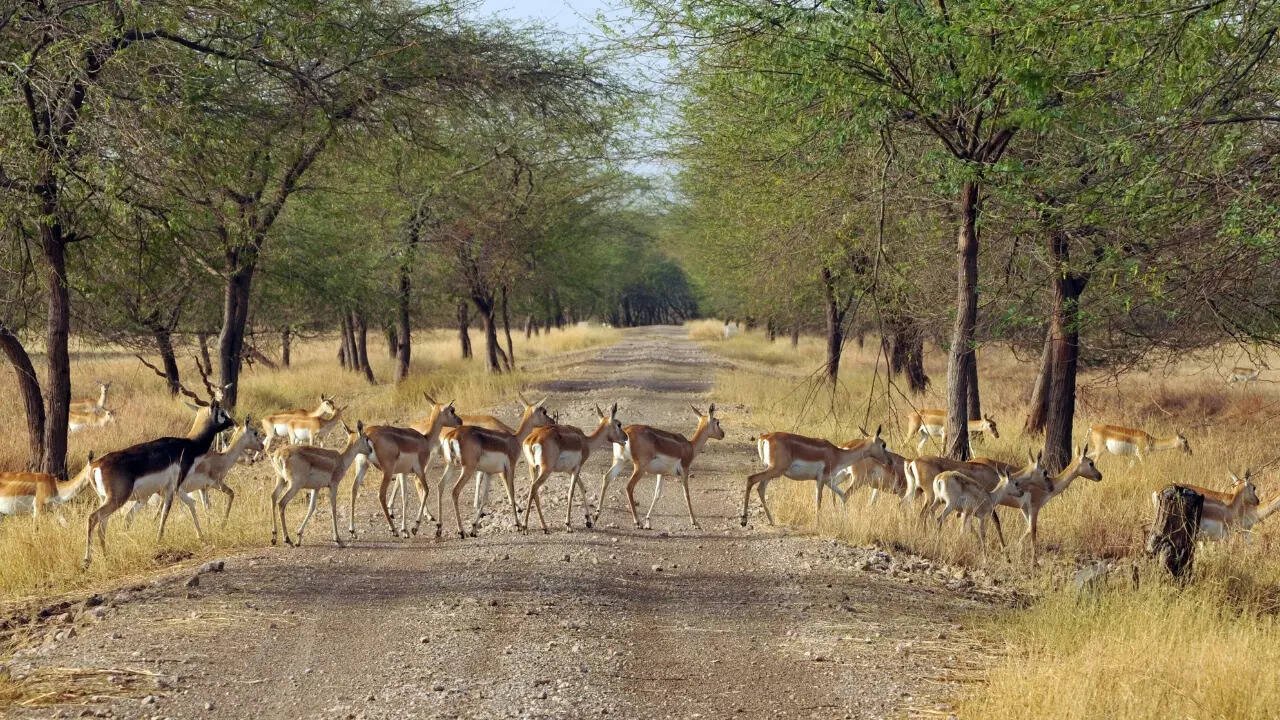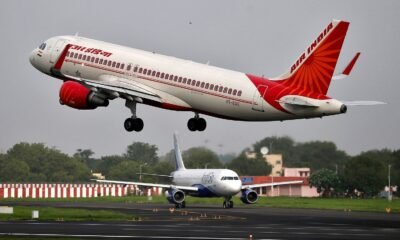Travel Guides & Articles
Now Air India Alters Flight Routes After Ahmedabad Air India Crash: Know The Details

Saturday, July 12, 2025
The Sardar Vallabhbhai Patel International Airport catastrophe, which saw an Air India flight tragically crash and thus send the entire flying fraternity into panic and despair, not only shocked the nation, but its impact has also created a kind of ripple effect on its travel and tourism sectors, which stretch over a number of cities, namely Delhi, Mumbai, Bengaluru, Chennai, and Jaipur. The impact caused by this deadly crash consists of large changes to flight schedules, changes to routings, and monetary losses by airlines and ground-level organizations that base their entire business on flying.
The disaster not only ignited concerns about flying’s safety, but has led to an on-the-spot reorganization of flight schedules. As an immediate consequence, countless airlines, from Air India to its competitors, have been spurred to shift their routes, cancel certain flights, and, for many, modify their lines of business. For frequent fliers, not only are the changes bothersome—they shed light on the precarious state of the flying business and its ability to recover from such catastrophic events.
Air India Crash: What Happened?
On 12th June, an Air India flight that was flying from Mumbai to Ahmedabad was among those that had an accident while landing at Sardar Vallabhbhai Patel International Airport, and there were several casualties and a temporary disruption of airport operations. The incident has elicited an expression of sorrow all over the country as the flying fraternity, authorities, and civilians pay their respects and show their sympathies to the bereaved families.
The accident, which occurred on the late evening, was investigated by the Directorate General of Civil Aviation (DGCA), and preliminary reports verify that unfavorable weather and likely technical failures might have caused the disaster. As the authorities toil day and night to identify the cause of the accident, the incident has placed the entire flying industry in spotlights, and acute doubts have arisen regarding flight security and the readiness of the airports to encounter sudden emergencies.
Air travel to Ahmedabad, and even to nearby cities like Mumbai and Delhi, was badly hit following the crash. As many Air India flights have been grounded to conduct safety examinations, the situation has affected businessmen and women, tourists, and families who are relying on scheduled flights to maintain their private and work commitments.
Major Disruptions and Flight Schedules Route Changes
Subsequent to the crash, numerous major carriers, like Air India, IndiGo, and SpiceJet, have been forced to adjust flights and flight schedules. As a result of Ahmedabad airport’s closure while repairs and security checks take place, flights from every corner of the nation are facing extensive delays and flight cancelations.
While Air India said they will resume all domestic flights in a matter of days, other airlines have had to work overtime to catch the increase in travel from affected persons. The result has been universal demands on flights to and from large cities such as Delhi, Mumbai, Bengaluru, and Chennai, where passengers are seeking alternative means to travel.
For instance, flights from Ahmedabad to Delhi and Mumbai by Air India have been diverted to Sardar Vallabhbhai Patel International Airport, which has resulted in congestion at other airport terminals. Airlines responded to this by launching new flights to handle the sheer number of passengers. For instance, SpiceJet has started special flights from Ahmedabad to Jaipur and IndiGo has launched flights from Bengaluru to Mumbai.
Even so, however, the added capacity on those new lines has failed to match the demand. This has led to stranded travelers, many of whom experience several hours-long holds, unintended layovers, or rescheduled journeys altogether. On a very few occasions, regional airports are overwhelmed by rerouted flights, which create extensive delays and more operational headaches.
Impacts on Regional Economy and Airline Industry
The economic effects from the loss of Air India stretch much further than the airlines alone. For cities such as Ahmedabad, which boasts an up-and-coming tourism industry, the loss offlight service on such short notice is already negatively affecting them. Ahmedabad, one of the major centers and cultural hotspots, relies on flying to attract tourists and corporate executives. When so many flights have been canceled or re-directed, the local economy was directly affected.
The cities’ tourist attractions, which depend on day-to-day flights, have also been affected. The tour and travel players within such regions are suffering from cancellations and rescheduling, and tourists are unable to adjust to the changing schedules of flights. The spillover effects are further being felt within the hotel sectors, transport companies, and tourist arrival-dependent hospitality businesses.
Also, since other carriers will need to increase capacity and reschedule flights, increased costs of operation will tend to have an effect on prices within the near future. Passengers may face increasing flight costs and lowered seat entitlement on other flights, compounding an already knotty situation further.
Navigating the Change: What Travelers Need to Know
For those passengers who are to travel by flight from Ahmedabad or whose flights have been interrupted, staying updated is crucial. The best way to avoid further distress is to keep consulting airlines and flight service companies to stay informed about existing flight status and changes in flight routes.
The passengers traveling to cities like Delhi, Mumbai, Bengaluru, and Chennai should also be informed about rerouting of flights and altered schedules. The cities’ airport traffic will presumably increase, and the passengers should arrive early to compensate for likely delays and security checks.
The airlines are doing every bit to reduce disruptions, but passengers need to take actions to make travel plans work smoothly on their end too. Phoning airlines to arrange to have flights rearranged or to consider alternative flight schedules is the advisable thing to do if your flight has been impacted. And, if you are an international traveler, expect longer connections and longer waiting, since the effects of these delays percolate through to international flights too.
Air Travel Safety and Regulation Enters a New Era
The disaster has also triggered new conversation on Indian airlines’ safety. While accidents on this massive scale are not frequent, the disaster serves as a wake-up call on the need to comply with strict norms on safety and to upgrade infrastructure continuously to address the growing demands of the flying industry.
The DGCA will most likely follow stricter safety regulations following its probe into the reason behind the crash. These include stiffer maintenance checks on planes, improved pilots’ training, and upgraded weather forecasting equipment to better protect travelers in the years ahead.
The international and Indian airlines market will probably reassess its own regulations on safety while this probe runs its course. For consumers, this may translate to tighter regulations and longer lines at airport waiting areas as a focus on security and safety continues to build following this fatal crash.
Conclusion: Looking Ahead to Safer and More Reliable Travel
As the flying world recovers from this disaster, the traveling public must remain informed and calm. The recovery will not come quickly, and there will be significant operational and logistics hurdles to overcome, but this disaster provides an opportunity to redetermine industry priorities and rebuild flying more safely, efficiently, and predictably.
For the affected persons by the flight schedule disruptions, the entire experience serves as a bitter reminder that travel plans can change within a matter of hours. The future direction of Indian flight travel, particularly to cities like Ahmedabad, Delhi, Mumbai, Bengaluru, Chennai, and Jaipur, will certainly be shaped by lessons from this experience.
As the flying world attempts to bounce back, one thing has become absolutely clear: traveler, airline, and city resilience will need to power the eventual recovery. For now, though, there’s a need to stay informed, stay current, and, above all, stay safe during this difficult period.
Travel Guides & Articles
Visit these India’s 5 stunning forests rich in wildlife and wonder

Fourth largest national park of India, located in Arunachal Pradesh of Northeast India. Most popular for its enormous biodiversity and untouched tropical rainforests. The park features about 1,000 floral and 1,400 fauna species. Namdapha is, infamously, the only world protected area where all four Indian big cats — tiger, leopard, snow leopard, and clouded leopard — coexist. Other animals that inhabit it include Asiatic black bears, Malayan sun bears, dhole (wild dogs), and more. It is a botanical wonderland and a wildlife conservation haven of Northeast India and also been declared an eco-sensitive area.
Travel Guides & Articles
India travel tips: Viral: Dutch woman shares tips for first-time travel in India, netizens react |

People from across the world travel to India and share their reviews and tips on travelling across the country. From positive to negative, people have all kinds of experiences while visiting the Indian subcontinent. However, in the midst of a thousand social media posts sharing tips for people travelling to India for the first time, one post has caught the eye of many for its unique claims.A Dutch woman named Ivana who is not just travelling in the country but also living in it, recently took to Instagram to share a detailed post about her life in the country, sharing things she had known before. From Indian families to sarees and rickshaw struggles Ivana had a say for it all and netizens are loving her reviews.
Indian values
Titled ’10 things I wish I knew before coming to Indian for the first time’ the post began with her appreciating India’s hospitality with the saying ‘Atithi devo bhava’ advising the travellers to ‘be prepared to be fed to death’She also shared how much Indians value family which is something one can only understand after spending time with them. ‘So def try to befriend local people and see how they live.’
Travel tips
Image credits: Getty Images
Another interesting tip Ivana shared was her experience visiting one of the seven wonders of the world, the Taj Mahal. ‘Taj Mahal is quite difficult to reach. Plan a trip to Agra for 2/3 days in order to not have a lousy Taj experience. Some basic tips: be THERE at 6am for a foreigner ticket, but keep in mind Taj is closed on Fridays for prayer,’ she wrote. She also revealed that the colour of the Ganga river in Rishikesh is ‘minty green’ and advised that if people plan to swim there then they should wear full clothes and watch out for currents and cold temperatures.
Saree experiences
Ivana shared that a saree is difficult to wear if not worn before but once worn, it’s highly comfortable and advised taking help from an elder aunt or at a salon.
India is not overcrowded
Image credits: Getty Images
One of the biggest misconceptions people have about India is that it’s overcrowded, which Ivana cleared with her statement. ‘India is not overcrowded! There’s plenty of space and ‘slow’ times. For the tourist places try to visit way before 10AM (like 8AM!) or you can go to more rural areas to escape all crowds. Be mindful of which places you visit without a guide though! Some places are even off limits for Indians.’
Netizens react to Ivana’s post
People who are planning to visit or move to India have been thanking the influencer for her tips and experiences. “Hi Ivana, just wanted to say that I absolutely love your content! I’m moving to India soon and have saved all your tips and infos, so helpful! Thanks for sharing such valuable insights 🙏” wrote a woman in the comments.“Such a good post, thanks Ivana! ❤️” added another.“Like you might have experienced, it’s easier to eat with your hands (wash them beforehand obviously)” wrote another, sharing their own tip.
Travel Guides & Articles
6 white sand beaches in India every beach lover should explore

Think of white-sand beaches and places like the Maldives and Seychelles appear to mind. But people forget that India too has its fair share of beaches blessed with powdery shores which can be experienced in Lakshadweep, the Andamans, and Kerala too. These beautiful coastlines are ideal for beach lovers wanting to enjoy sunbathing and soaking in the charm of sea beauty.
Let’s have a look at six white-sand beaches in India every beach lover must visit!
-

 Business2 weeks ago
Business2 weeks agoThe Guardian view on Trump and the Fed: independence is no substitute for accountability | Editorial
-
Tools & Platforms1 month ago
Building Trust in Military AI Starts with Opening the Black Box – War on the Rocks
-

 Ethics & Policy2 months ago
Ethics & Policy2 months agoSDAIA Supports Saudi Arabia’s Leadership in Shaping Global AI Ethics, Policy, and Research – وكالة الأنباء السعودية
-

 Events & Conferences4 months ago
Events & Conferences4 months agoJourney to 1000 models: Scaling Instagram’s recommendation system
-

 Jobs & Careers2 months ago
Jobs & Careers2 months agoMumbai-based Perplexity Alternative Has 60k+ Users Without Funding
-

 Podcasts & Talks2 months ago
Podcasts & Talks2 months agoHappy 4th of July! 🎆 Made with Veo 3 in Gemini
-

 Education2 months ago
Education2 months agoMacron says UK and France have duty to tackle illegal migration ‘with humanity, solidarity and firmness’ – UK politics live | Politics
-

 Education2 months ago
Education2 months agoVEX Robotics launches AI-powered classroom robotics system
-

 Funding & Business2 months ago
Funding & Business2 months agoKayak and Expedia race to build AI travel agents that turn social posts into itineraries
-

 Podcasts & Talks2 months ago
Podcasts & Talks2 months agoOpenAI 🤝 @teamganassi





















